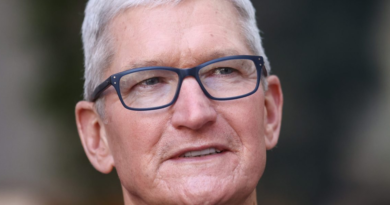New research gives hope for a way to help prevent long COVID
The antiviral drug Paxlovid was associated with a 26% less risk of developing long COVID, a new study this month found. For every 100 people who took the antiviral treatment, roughly 2.3 fewer cases of long COVID were detected 90 days post initial COVID infection, the study concluded.
Paxlovid has been reported effective in reducing hospitalization and death post COVID infection for those eligible to take it, which includes those at high risk for developing severe illness from a COVID infection. This study looked at those with at least one underlying risk for developing severe illness, such as being overweight, a current smoker, having heart disease or diabetes. The study further found that the drug was associated with a 48% lower risk of death and 30% lower risk of hospitalization following initial infection. Little has been known about the drug’s potential effect on developing long COVID, but the study funded by the United States Department of Veterans Affairs—which has not undergone peer review—acknowledged its benefits long term when taken in the initial phase after infection, between one and five days after.
“We’re beginning to understand that there are potentially things that could probably reduce the risk of long COVID,” Ziyad Al-Aly, coauthor on the study and chief of research and development at VA Saint Louis Health Care System, tells Fortune. “That’s a ray of hope here,” adding that for those at higher risk, the antiviral may offer some protection to developing symptoms associated with long COVID.
The results stayed consistent regardless of people’s vaccination status, risk level, and whether or not they had prior COVID-19 infections, according to the study. While some people have been hesitant to take the drug due to reports of rebound infections—getting a positive COVID test or symptoms following initial recovery—Al-Aly says it’s still important to consider the potential positive outcomes when debating whether or not to take it when eligible.
“Going into the winter wave where a lot of people may be affected, for those people who already qualify for Paxlovid…I think they need to weigh the evidence,” he says. “Paxlovid reduces the risk of acute problems, and also potentially reduces the risk of long-term complications.”
Over 56,000 participants who had a COVID-19 infection between March and June of this year and had at least one underlying risk factor for developing severe illness were studied; 9,217 patients took a five-day course of Paxlovid within five days after initial infection, and 47,123 patients did not take any COVID treatment drug for the first 30 days post-infection.
The researchers monitored the development of long COVID, specifically defined as having at least one of 12 post-COVID symptoms 90 days after infection, including shortness of breath, fatigue, muscle pain, ischemic heart disease, dysrhythmia, deep-vein thrombosis, pulmonary embolism, liver disease, acute kidney injury, diabetes, neurocognitive impairment, and cough.
All but two of the symptoms, cough and newly developed diabetes, had significant associations with Paxlovid. Al-Aly doesn’t know why these two in particular did not seem to have an association with the drug, but hypothesizes that different post-COVID symptoms are created by different mechanisms that react with the drug in varied ways.
Scientists describe long COVID as similar to chronic fatigue syndrome, affecting millions of Americans’ daily lives; the Brookings Institution estimates that up to 4 million Americans are out of the workforce due to long COVID. This study focused on those older Americans with at least one underlying condition who were eligible for the drug, predominantly older white males, and while Al-Aly says the risk reduction still remains across all the different subgroups, it’s crucial to understand post COVID for younger people and diverse populations.
“Evaluating whether Paxlovid and lower risk individuals, younger people who have no medical problems, reducing the risk of long COVID is going to be an urgent priority and should be addressed,” Al-Aly says.
It’s recommended to take Paxlovid within five days of receiving a positive test, so it’s most effective the sooner you get prescribed the drug and begin taking it.
Sign up for the Fortune Features email list so you don’t miss our biggest features, exclusive interviews, and investigations.


